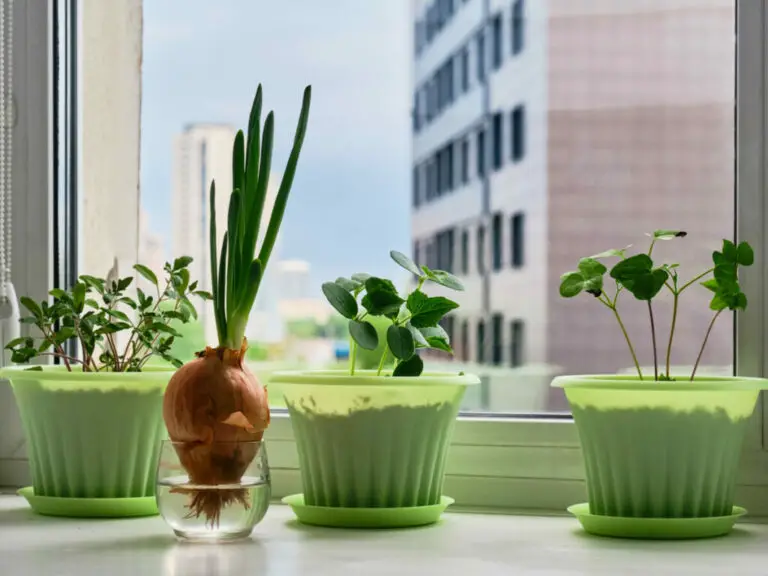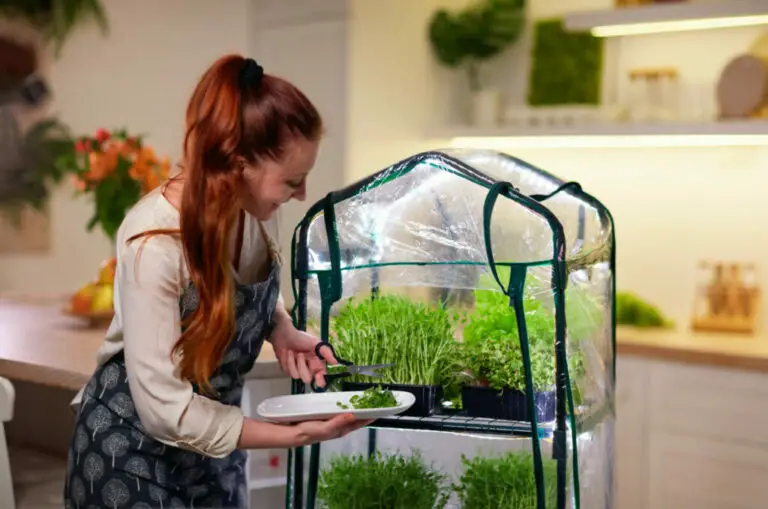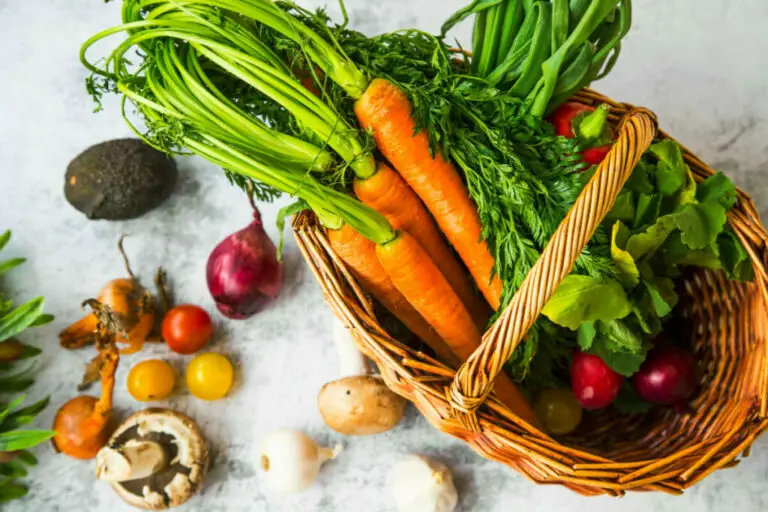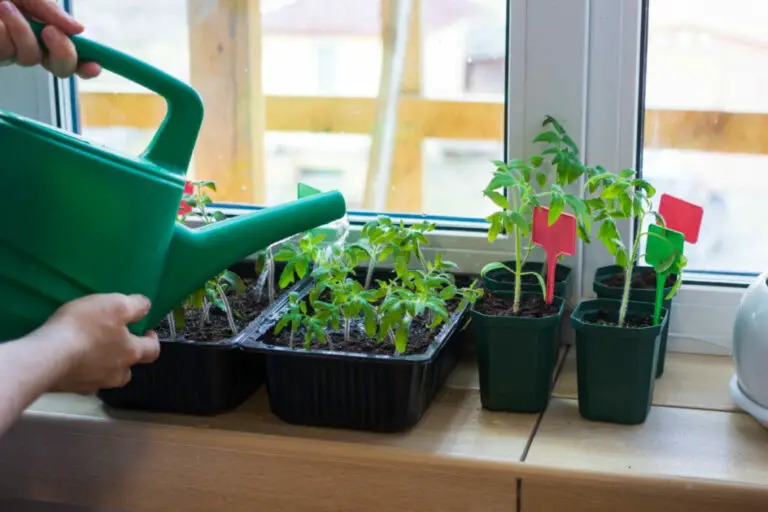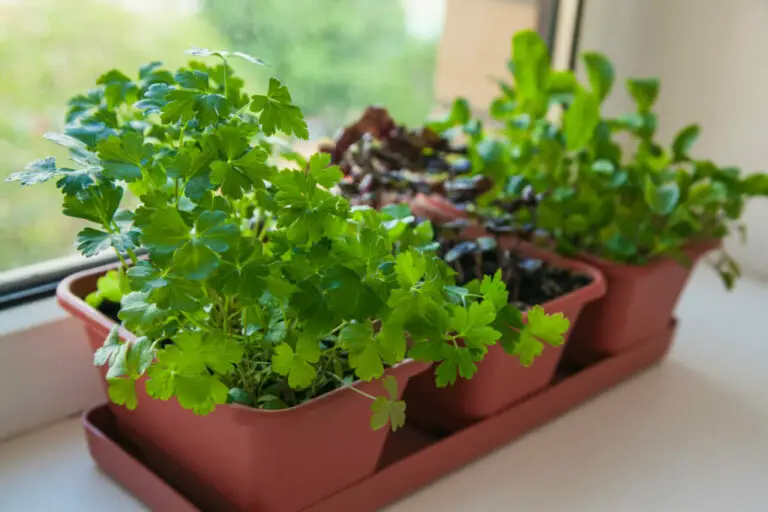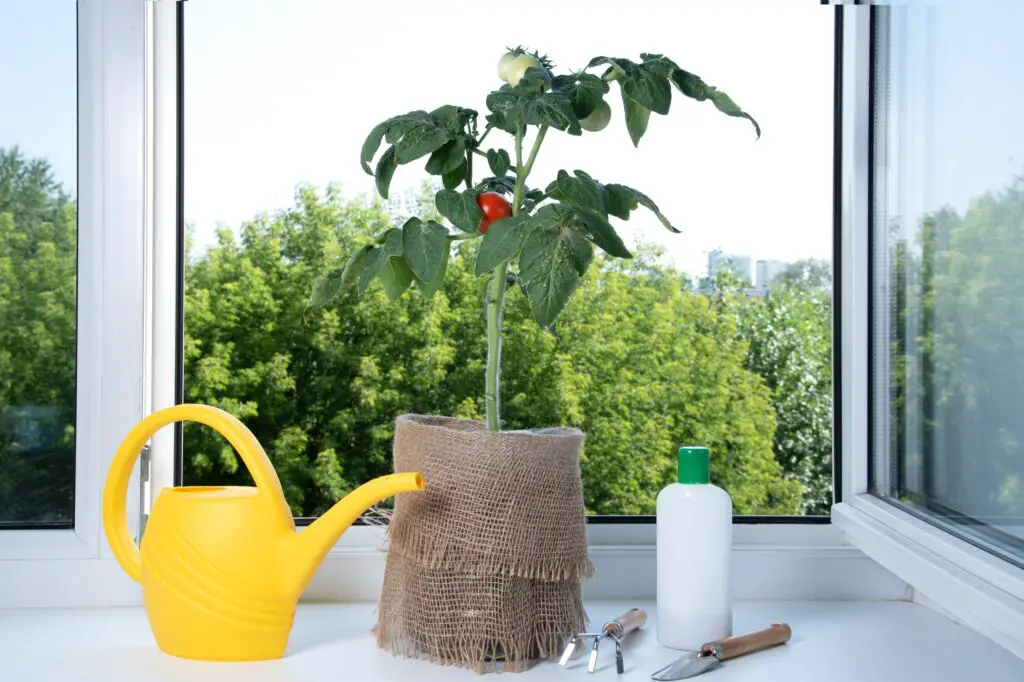
When it comes to gardening, most of it happens outside during the peak seasons of growing vegetation. Though those times are best, growing vegetables indoors is an option for growing out-of-season plants or for people without enough outdoor space to grow what they’d like. Growing vegetables indoors is possible and doesn’t have to be difficult.
In this article, we will discuss what vegetables are most common for gardening and whether they grow well indoors, as well as their individual recommendations for properly caring for these vegetables. To learn more about how to successfully grow a garden indoors, check out my article covering how to get started with indoor gardening.
1. Carrots
Starting off this list are our lovely orange friends: carrots.
What you should know about carrots and most others on this list, is that they don’t require a lot of space. They just need depth so a pot works nicely.
Next, carrots do require more soil depth than others, so finding a pot or container that is relatively tall is excellent. This will also depend on what variety of carrots you choose. For example, a medium-sized carrot (5.5″-7.25″) doesn’t need as much depth as larger ones.
For growth effectiveness, some carrots don’t require much sunlight, while others will need a lot. In general place them in an area that should get good lighting for 4 to 12 hours a day, more being better than less. Water them regularly, keeping the soil from getting totally dry, but not oversaturating it. Carrots grow well at room temperature too making them a great indoor plant.
2. Garlic Greens
Garlic bulbs, if they’re left out for a while, start to sprout out a green foot.
With these green feet, we can grow garlic greens.
Much like carrots, these little garlic greens are easy to grow indoors and don’t take up much space, leaving more opportunities to have a full set of garlic greens. Unlike carrots, the soil depth requirement is much smaller.
Planting the garlic greens about 2 inches beneath the soil will provide optimal garlic green growth. It is also best to use garlic greens as fresh as possible as they will start to deteriorate in quality after harvesting.
The average recommended sunlight garlic greens need is about six to eight hours per day, with a temperature of 45° to 75° Fahrenheit.
When the garlic greens are about, 8 to 10 inches, that is the best time to harvest them.
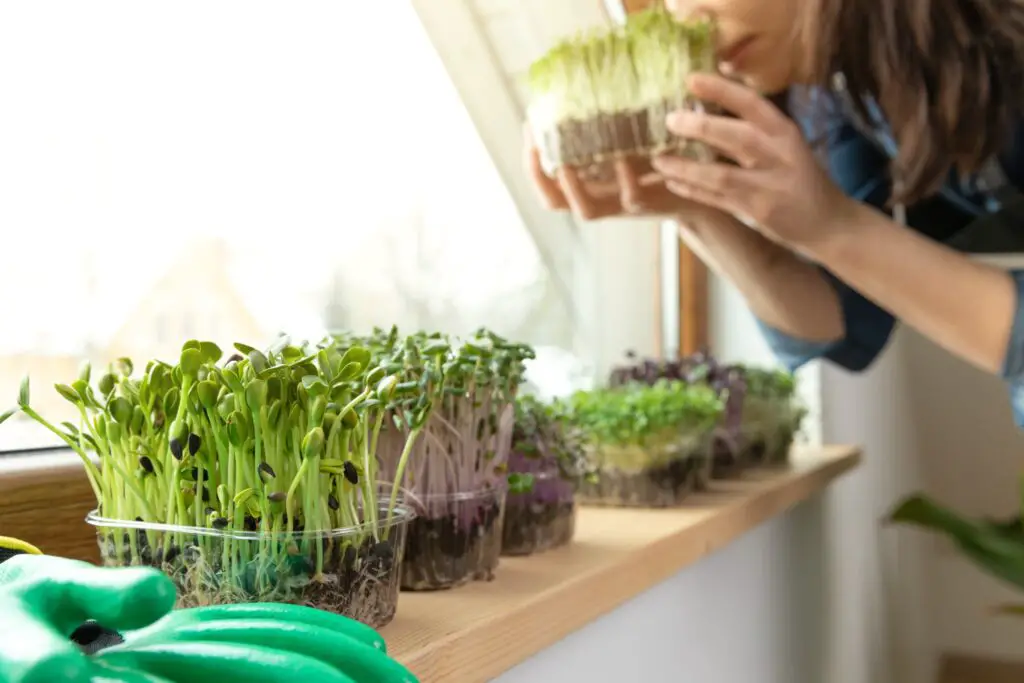
3. Sprouts
Perhaps one of the most effortless vegetables to grow indoors is sprouts.
Sprouts require minimal light, therefore making sprouts one of the vegetables to be planted and grown nearly anywhere in the homes. Not to mention, again, the extremely minimal space it requires, only needing about 2 inches of soil depth.
As we have said about the lack of sunlight, sprouts, grow well with indirect sunlight, needing sunlight for only 15 minutes before harvesting.
Other than sprouts not needing much direct sunlight, they will benefit greatly if kept at a temperature of about 70-80° Fahrenheit, a bit warmer than what most vegetables need.
Other than the warmer temperature requirement, growing sprouts indoors is effortless, yet rewarding.
4. Green Onions
Much like sprouts, green onions or scallions do not require much sunlight to grow effectively.
Much like garlic greens also, they are planted and harvested nearly the same way. Planting them into the soil, allowing them to grow to 6 to 8 inches, and then harvesting the desired amount, leaving the rest in the soil to grow more throughout the year.
It’s important to note that though green onions are similar to garlic greens, they remain visibly distinct due to the leaves’ shapes, with garlic greens being flat and green onions being round.
Finally, the best temperature for effective green onion growth is between 68° to 77° Fahrenheit.
Overall, green onions are a great vegetable for growing quickly and easily indoors.
5. Hot Peppers
Shifting back over to vegetables that require a fair amount of light, hot, or even sweet peppers will thrive with such sunlight.
Because of their tropical nature, hot peppers will not survive long in colder climates and will die if exposed. To avoid this indoors is actually better than outdoors for a longer growing season in temperate climates.
While you can grow hot peppers indoors, they do take up a bit more space and benefit a lot from having good soil depth. So you probably won’t grow a lot of hot peppers inside your home.
Hot peppers require a large pot or container at least 8 inches in diameter to allow enough growth, as well as 14-20 hours of daily sunlight. Leaving them at room temperature, these vegetables will make excellent progress when grown indoors.
Due to the increased need for sunlight and during heavy overcast days, it’s best to invest in a UV light for indoor purposes or any other related item to promote healthy growth.
While you probably won’t have a lot of pepper plants indoors, each one can produce a lot of peppers.
Another way of growing effective hot peppers indoors is to begin growing them in the summer outside and then bring them indoors to extend the growing season.
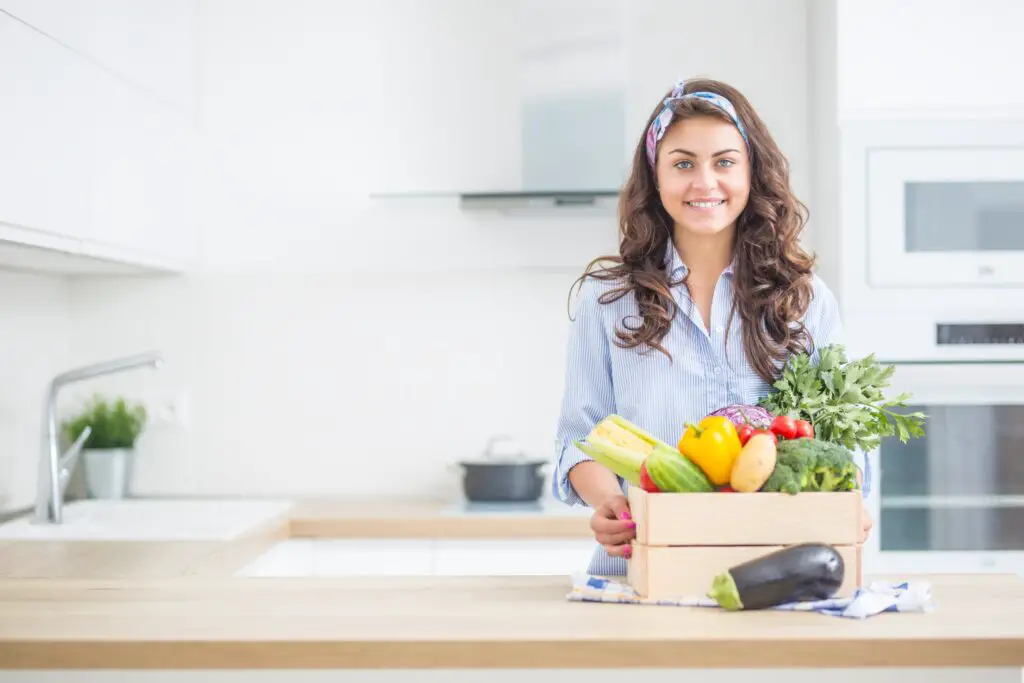
6. Salad Green Variety
For salad greens, I’ll include items such as lettuce, spinach, kale, etc. because they tend to grow very similarly and under very similar conditions.
Salad greens are one of the most reliable vegetables to grow both indoors and outdoors.
Nothing too special is required to effectively grow salad greens indoors. You just need a reliable container that can hold 2-4 inches of soil depth.
With an average temperature of 70° Fahrenheit and direct light for at least 5 hours per day, the salad greens will effectively grow to be healthy and tasty.
When harvesting, snip off the outer layers of the salad green and retain the center of the plant in the soil to produce more over time.
7. Herb Variety
Some of the best and easiest herbs to grow indoors are parsley, celery, and thyme, to name a few.
Herbs require a bit of sunlight, like hot peppers, ideally 12-16 hours daily. They grow best around 70° Fahrenheit.
When it comes to harvesting herbs, there are a few parts you can use: the leaves, the flowers, and the seeds. Each has a different flavor and use.
For harvesting herbs it’s best to follow the principle of snipping off the desired amount and leaving the rest in the soil to keep growing and stay fresh.
8. Spring Radishes
As you may have noticed, most of these vegetables that are common and perfect for growing indoors are mostly easy and perfect for beginners. Spring radishes follow this trend actually being one of the most beginner friendly.
With their unique shapes, spring radishes do require a decent size pot for the roots to fit and develop during the growth period. Adding to this, make sure the pot or container chosen has enough drain holes for the water. Considering the bulb of the radish develops quickly, it’s vital to prevent water clogging and not drown the radishes.
Spring radishes require light for at least 6 hours per day and grow best at temperatures between 45-70° Fahrenheit.
Lastly, within 30 days, the radish should be ready to harvest and consumed or used within a desired recipe.
9. Potatoes
One of the best vegetables to grow is potatoes. They’re easy to propagate and provide a lot of sustenance.
While talking about Idaho and potatoes, it’s no exaggeration when Idaho ranks the top in potato production. Though most of these potatoes grown are outside, it’s not surprising that potatoes can be grown inside as well.
Potatoes are used in tons of recipes and are a staple in most people’s food storage.
The biggest trick to growing potatoes indoors is to make sure the potatoes have enough space and room to grow. This includes having a large enough container with room to grow further and enough soil to upkeep the potato’s ongoing growth during the entire process.
This means that once the chosen potato is divided into smaller pieces and planted into the soil at reasonable distances from each other, the goal is to inspect and make sure the potato remains in the soil.
Knowing how large potatoes can get, their bodies can protrude from the soil, which needs to be recovered with soil if necessary.
Six hours of sunlight and room temperature are recommended for the best potatoes.
10. Tomatoes
Tomatoes have the same issue as potatoes, in that they are large and require extra space to get them growing well.
Though the steps to ensure spacious containers and enough soil are similar to potatoes, you’ll probably need to use a tomato cage to hold up some of the growing tomatoes as they expand out from the stems and get top-heavy in most cases.
That said, you can grow tomatoes in a lot less space if you grow the right variety: micro tomatoes. Micro tomatoes are significantly smaller than their counterparts and will be easier to handle during the growing process.
With micro tomatoes, the use of stakes isn’t always necessary since they don’t develop into their top-heavy, regular-sized counterparts.
Though on the smaller end, one will be blessed with a good abundance of fresh micro tomatoes. This may be a great option during the cold seasons when planting, growing, and harvesting regular-sized tomatoes aren’t possible, yet want to grow tomatoes, nonetheless.
Lastly, temperatures between 58-60° Fahrenheit and light for at least 8 hours per day will spur quality tomatoes.
11. Peas
Much like the previously mentioned tomatoes, peas can come in a variety of sizes that ranges from large to small.
Here, we should focus on the smaller varieties like Tendersweet, a non-vining version of snap peas that usually expands more vertically, rather than horizontally.
Other versions like the bush peas retain that horizontal growth, but in a controlled fashion, in that, as the name suggests, they grow in a bush-like fashion: small and compact.
The ideal range of temperature that these need to be under is around 55° to 70° Fahrenheit, along with 5 or more hours of sunlight per day.
Hopefully, this has helped you gain an idea of what vegetables are common to grow indoors and whether they will grow well. Though I’ve listed off many vegetables, these aren’t the only vegetables that can be grown extremely well indoors. I encourage you to use the principles in this article to figure out which of your favorite vegetables might grow well indoors.

